
An antiquarian or antiquary is an aficionado or student of antiquities or things of the past. More specifically, the term is used for those who study history with particular attention to ancient artifacts, archaeological and historic sites, or historic archives and manuscripts. The essence of antiquarianism is a focus on the empirical evidence of the past, and is perhaps best encapsulated in the motto adopted by the 18th-century antiquary Sir Richard Colt Hoare, "We speak from facts, not theory."

Tiwanaku is a Pre-Columbian archaeological site in western Bolivia near Lake Titicaca and one of the largest sites in South America. Surface remains currently cover around 4 square kilometers and include decorated ceramics, monumental structures, and megalithic blocks. The site's population probably peaked around AD 800 with 10,000 to 20,000 people.
Antiquity or Antiquities may refer to:
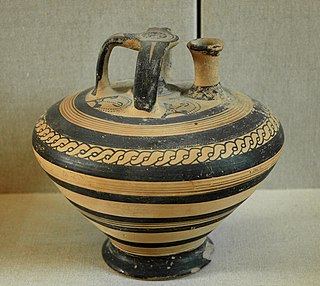
An artifact, or artefact, is something made or given shape by humans, such as a tool or a work of art, especially an object of archaeological interest.
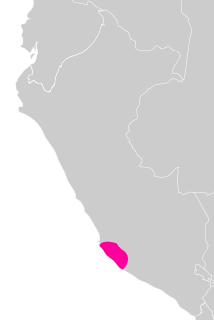
The Nazca culture was the archaeological culture that flourished from c. 100 BC to 800 AD beside the arid, southern coast of Peru in the river valleys of the Rio Grande de Nazca drainage and the Ica Valley. Having been heavily influenced by the preceding Paracas culture, which was known for extremely complex textiles, the Nazca produced an array of crafts and technologies such as ceramics, textiles, and geoglyphs—specifically the Nazca Lines. They also built an impressive system of underground aqueducts, known as puquios, that still function today. The Nazca Province in the Ica Region was named for this people.

Sir William Smith was an English lexicographer. He became known for his advances in the teaching of Greek and Latin in schools.
Created in 1946, the International Council of Museums (ICOM) is a non-governmental organisation maintaining formal relations with UNESCO and having a consultative status with the United Nations Economic and Social Council. ICOM also partners with entities such as the World Intellectual Property Organization, INTERPOL, and the World Customs Organization in order to carry out its international public service missions, which include fighting illicit traffic in cultural goods and promoting risk management and emergency preparedness to protect world cultural heritage in the event of natural or man-made disasters. Members of the ICOM get the ICOM membership card, which provides free entry, or entry at a reduced rate, to many museums all over the world.
The Royal Society of Antiquaries of Ireland is a learned society based in Ireland, whose aims are "to preserve, examine and illustrate all ancient monuments and memorials of the arts, manners and customs of the past, as connected with the antiquities, language, literature and history of Ireland". Founded in 1849, it has a countrywide membership from all four provinces of Ireland. Anyone subscribing to the aims of the Society, subject to approval by Council, may be elected to membership. Current and past members have included historians, archaeologists and linguists, but the Society firmly believes in the importance of encouraging an informed general public, and many members are non-professionals.
Antiquity is an academic journal dedicated to the subject of archaeology. It publishes six issues a year, covering topics worldwide from all periods. Its current editor is Robert Witcher, Associate Professor of Archaeology at the University of Durham. Since 2015, the journal has been published by Cambridge University Press.

The Israel Antiquities Authority is an independent Israeli governmental authority responsible for enforcing the 1978 Law of Antiquities. The IAA regulates excavation and conservation, and promotes research. The director-general is Mr. Israel Hason and its offices are housed in the Rockefeller Museum.
The Society for American Archaeology (SAA) is a professional association for the archaeology of the Americas. It was founded in 1934 and its headquarters are in based in Washington, D.C.. As of 2019, it has 7,500 members. Its current president is Joe E. Watkins.
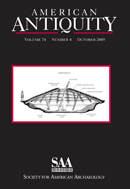
The professional journal American Antiquity is published by the Society for American Archaeology, an organization of professional archaeologists of the Americas. The journal is considered to be the flagship journal of American archaeology.
The Korean Archaeological Society is a professional and scholarly association of archaeologists in South Korea. The Society publishes the peer-reviewed Journal of the Korean Archaeological Society. This journal is the South Korean equivalent of scholarly archaeological journals such as American Antiquity, Kaogu, Antiquity, and Kokogaku Kenkyu. The Society also hosts a national conference every year in early November.
Robert Wauchope was a well-respected American archaeologist and anthropologist, whose academic research specialized in the prehistory and archaeology of Latin America, Mesoamerica, and the Southwestern United States.

Caspar Jacob Christiaan Reuvens was a Dutch historian and archaeologist. He was the founding director of the Rijksmuseum van Oudheden in Leiden, the world's first ever professor of archaeology, and conducted the first excavations at the Roman provincial site Forum Hadriani in the Netherlands.
Archaeology, or archeology, is the study of human activity through the recovery and analysis of material culture. The archaeological record consists of artifacts, architecture, biofacts or ecofacts and cultural landscapes. Archaeology can be considered both a social science and a branch of the humanities. In Europe it is often viewed as either a discipline in its own right or a sub-field of other disciplines, while in North America archaeology is a sub-field of anthropology.
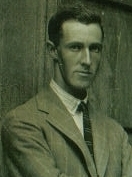
Gerald Lankester Harding was a British archaeologist who was the director of the Department of Antiquities of Jordan from 1936 to 1956. His tenure spanned the period in which the Dead Sea Scrolls were discovered and brought to public awareness. Without his efforts many of the scrolls might have disappeared into private collections never to be seen again.
Chichen Itza and Tula have numerous architectural similarities in a number of their constructions. This Toltec-Maya connection is widely considered powerful, unprecedented, and unique in Mesoamerica. Unlike most Maya sites, some of Chichen Itza’s buildings have the traits of the Toltecs, a historically powerful indigenous group from modern-day Mexico. The explanation of these similarities is a point of controversy among the scholars of the Toltec and Maya fields. Certain historical records caused many early scholars of the region to assume that a Toltec invasion from Tula, Hidalgo, usually placed in the ninth or tenth centuries, was responsible for a new wave of Mexican-style Maya buildings after the rest of the buildings in Chichen Itza were built. Other historical accounts imply a migration from Tula to Chichen Itza. An account of the Tula records a ruler of the Toltecs travelling east, which, paired with another account of Chichen that records a ruler from the west coming and teaching the Maya of that city many things, supported a direct influence of the Toltecs on the Maya around 900–1000 A.D. However, recent radiocarbon dating suggests that Chichen Itza’s ‘mexicanized’ and pure Maya constructions were built at the same time, and that both were built previous to any recorded Toltec invasion, and previous to the banishing of the semi-historical ruler. The precise connection between these two nations is unknown, and fiercely contested among scholars of Toltecs and Maya, but it is not disputed that no other counterparts to these two cities are found in the 800 mile distance between them. Established contradicting theories and a lack of information cause the precise relationship between Chichen Itza and Tula, Hidalgo to be fervently contested.
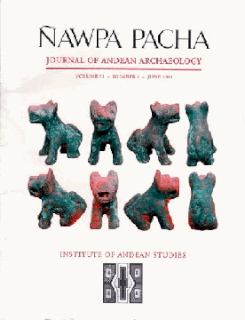
Ñawpa Pacha, Journal of Andean Archaeology is a biannual peer-reviewed academic journal published by Taylor & Francis on behalf of the Institute of Andean Studies. Ñawpa Pacha means "Antiquity" in the Quechua language. It was established by John Howland Rowe in 1963.









